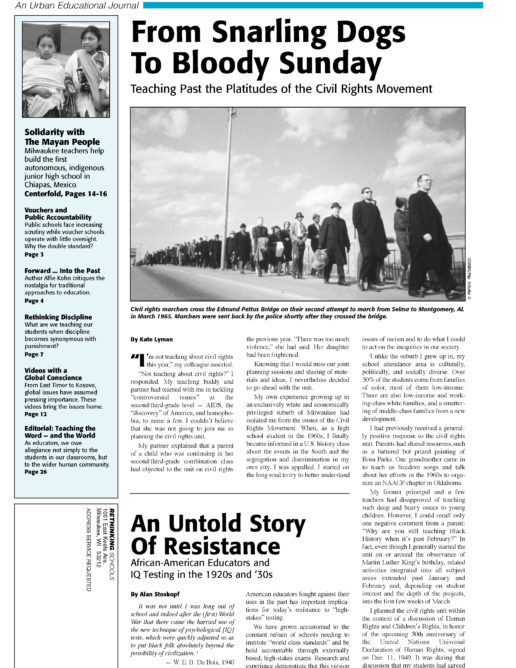Preview of Article:
Putting Muscle into the Meaning of Solidarity
We spent our first week doing repairs – fixing showers, replacing rotted wood boards, painting revolutionary murals, and doing groundwork for the foundation to the new school library that we would be building. The second week, construction began. For three days we dug ditches, each morning bailing out the ditch because of torrential rainstorms during the night. It was during this phase that the Zapatista construction team arrived, consisting of about 50 young men from surrounding communities. The last two days, we laid the cement for the foundation and began putting in the metal-rod bracing for the library’s cement walls.
The junior high school in Oventic will be a boarding school, which is logical in Mexico given the distances that villagers must travel to school. An estimated 250 students and staff will ultimately live at the school. The Zapatistas have a wonderful flair for symbolism, and the new school is scheduled to open January 1, in the new millennium. (A “Y2K Zapatista” caravan is being organized from Dec. 28 to January 5 to take part in celebrating the school’s opening; those interested should contact Schools For Chiapas; see resources page 16.)
While our delegation focused on construction, there was also time for cultural exchange. We often spent late afternoons playing basketball with the Zapatista teachers-in-training at Oventic or with workers from surrounding villages. Evenings were filled up with planning meetings and informal political discussions that often included “peace campers” at Oventic (sponsored by international human rights organizations) and members of the Zapatista movement.
During my two weeks, it was clear that the Zapatistas were not dependent on the delegation’s labor to help build the new school. But the Zapatistas are acutely aware of the importance of international solidarity and education. They are particularly concerned about educating the U.S. public, given that US political and economic interests significantly influence the Mexican government’s policies.
Since I’ve been back, my students, my coworkers, and my friends have all heard about my trip, and have been encouraged to go see for themselves what is happening in Chiapas. I hope, that in my own small way, I am helping others to better understand the struggles of the Mayan people, and the example provided by the Zapatistas for all who are seeking a better world.</p

